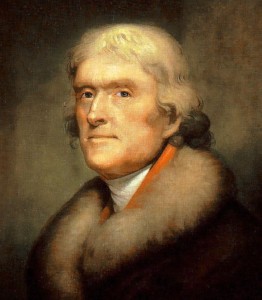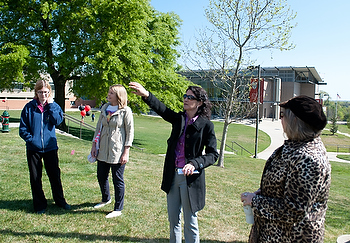
Way way back in 1791, at the dawn of the American experiment in democracy, Thomas Jefferson put something prescient to paper: “Let us save what remains: not by vaults and locks which fence them from the public eye and use in consigning them to the waste of time, but by such a multiplication of copies, as shall place them beyond the reach of accident.” Surely Mr. Jefferson put his money where his mouth was when he donated his collection of 6,487 books to the Library of Congress, forming its core collection, and preserved his own papers for future scholars.
I’d argue, too, that Jefferson was an outreach kind of guy. He wanted “what remains” of lives lived, as in the archival records of public servants in particular, out in the public sphere, where future generations could examine and learn from them. So went the way of archives in America. Generally speaking, American archives are open and accessible to the public, and have become more so over time.
Thanks to archival records, in fact, we know that Jefferson had ties to the Catholic University of America here in Washington, D.C. It was Jefferson who advised Samuel Harrison Smith, a Philadelphia native, to relocate to what is now the campus of Catholic University, in order to establish Washington’s first newspaper, the National Intelligencer. Smith and his wife, Margaret Bayard Smith, followed Mr. Jefferson’s advice and built a home that would remain part of the Catholic University campus until it was demolished in 1970.
The circulation of archival information is the province of the Education Archivist.
While the public-spiritedness expressed by Mr. Jefferson dates back to the eighteenth century, the Education Archivist is a phenomenon of the twenty-first. Through the twentieth century, most of the activities of the Education Archivist were conducted by reference archivists or the main archivist him/herself. As Education Archivist, I manage all educational programs and outreach activities related to the University’s archival records and collections.†

When I began working as Education Archivist in the summer of 2005, the position was a new one created to meet the opportunities and challenges of the twenty-first century archive. I had served as a Project Archivist prior to that, and the newer position evolved from our interest in creating online educational websites for Catholic high school teachers using primary source materials in their classes. Our archives embraced the possibilities of the web relatively early on: our general web page went up in 1996, our first finding aid and digital exhibit went online in 1999, and a digital collection of photographs from our Terence Powderly collection was up in 2002. One of my jobs was to promote these materials to multiple user groups, specifically, the University community, Catholic school teachers, and researchers in general. Another was to continue creating content for our educational sites. Additionally, at this time, my job was to collaborate with educators (both on and off campus) to fashion presentations with primary source materials related to their courses. Finally, I was tasked with writing articles that illuminated the uses and value of particular parts of our collections.
From these beginnings I worked with staff to develop a full suite of programs serving the University community as well as the general public. In addition to managing our American Catholic History Classroom, I do presentations to classes in all disciplines, historical tours of the CUA campus, organize and present at conferences, and serve on several committees toward promoting our collections across the broader community.
My future posts will discuss past projects, future projects, and things I have picked up with respect to education and archivy along the way.
†At the outset I’d note that Education Archivist is sometimes equated with Outreach Archivist. Education and outreach overlap, to be sure, but I would argue that educational archival programming requires a type of content knowledge of collections that enables the archivist to interpret collection materials toward achieving educational goals (e.g., those outlined by staff trained in secondary knowledge related to the collection materials). Outreach is the more general activity of promoting collections that can be driven more by marketing strategies and principles or educational goals. In this case, the Education Archivist performs both education on collections and more general promotional outreach related to collections.
